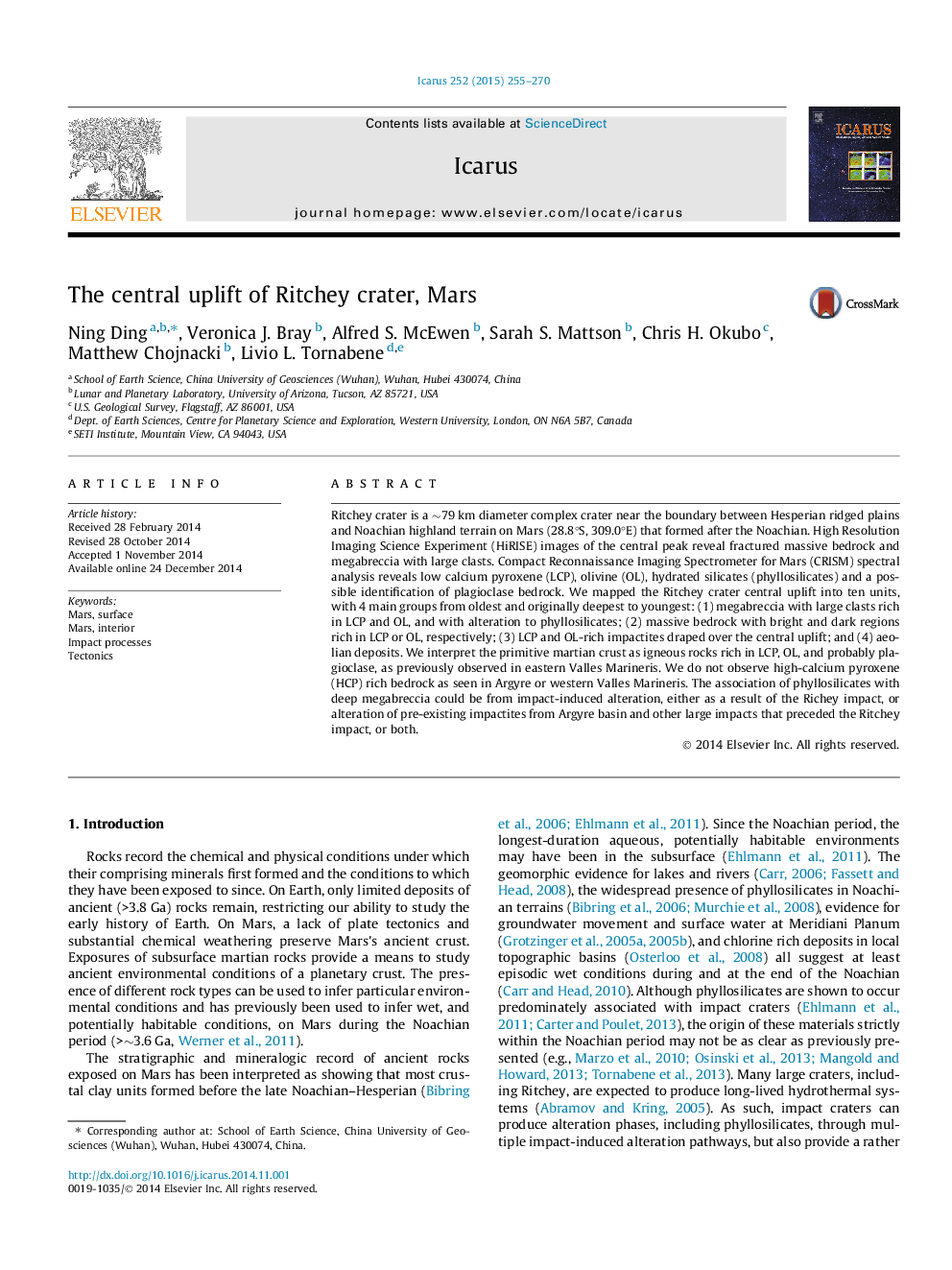| Article ID | Journal | Published Year | Pages | File Type |
|---|---|---|---|---|
| 8136545 | Icarus | 2015 | 16 Pages |
Abstract
Ritchey crater is a â¼79 km diameter complex crater near the boundary between Hesperian ridged plains and Noachian highland terrain on Mars (28.8°S, 309.0°E) that formed after the Noachian. High Resolution Imaging Science Experiment (HiRISE) images of the central peak reveal fractured massive bedrock and megabreccia with large clasts. Compact Reconnaissance Imaging Spectrometer for Mars (CRISM) spectral analysis reveals low calcium pyroxene (LCP), olivine (OL), hydrated silicates (phyllosilicates) and a possible identification of plagioclase bedrock. We mapped the Ritchey crater central uplift into ten units, with 4 main groups from oldest and originally deepest to youngest: (1) megabreccia with large clasts rich in LCP and OL, and with alteration to phyllosilicates; (2) massive bedrock with bright and dark regions rich in LCP or OL, respectively; (3) LCP and OL-rich impactites draped over the central uplift; and (4) aeolian deposits. We interpret the primitive martian crust as igneous rocks rich in LCP, OL, and probably plagioclase, as previously observed in eastern Valles Marineris. We do not observe high-calcium pyroxene (HCP) rich bedrock as seen in Argyre or western Valles Marineris. The association of phyllosilicates with deep megabreccia could be from impact-induced alteration, either as a result of the Richey impact, or alteration of pre-existing impactites from Argyre basin and other large impacts that preceded the Ritchey impact, or both.
Related Topics
Physical Sciences and Engineering
Earth and Planetary Sciences
Space and Planetary Science
Authors
Ning Ding, Veronica J. Bray, Alfred S. McEwen, Sarah S. Mattson, Chris H. Okubo, Matthew Chojnacki, Livio L. Tornabene,
